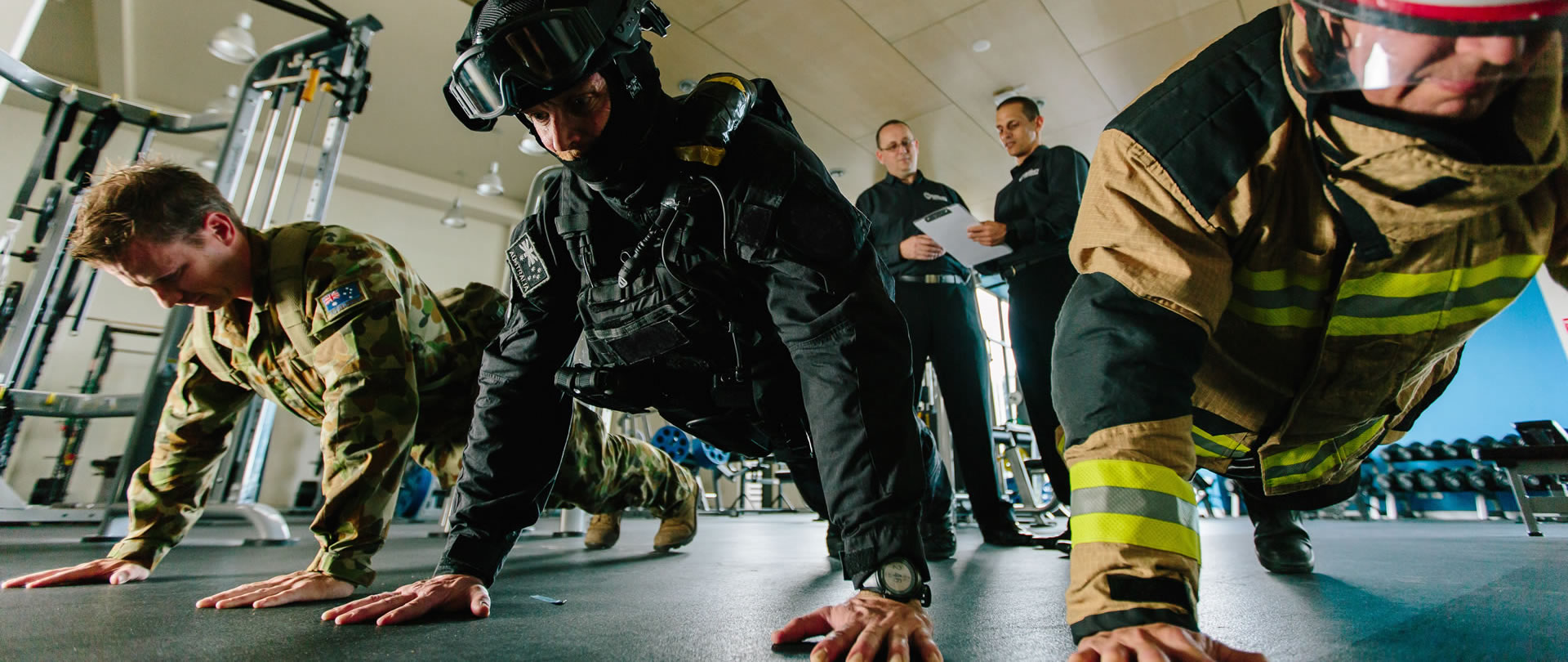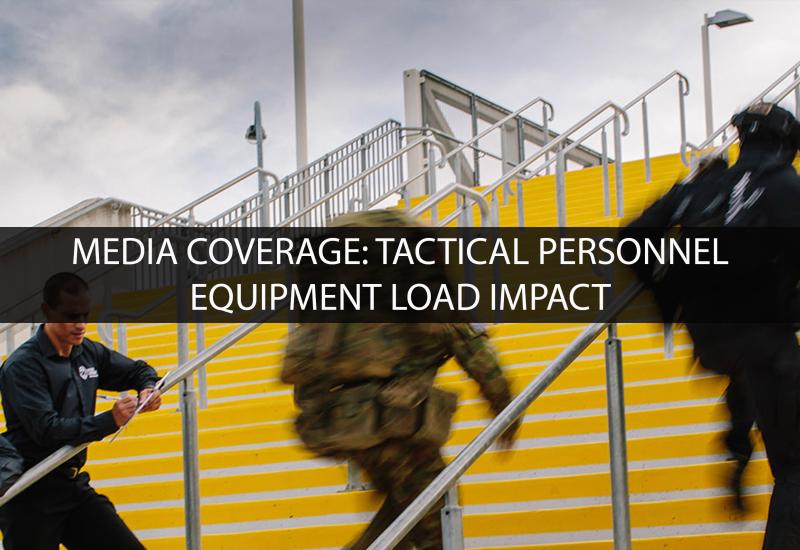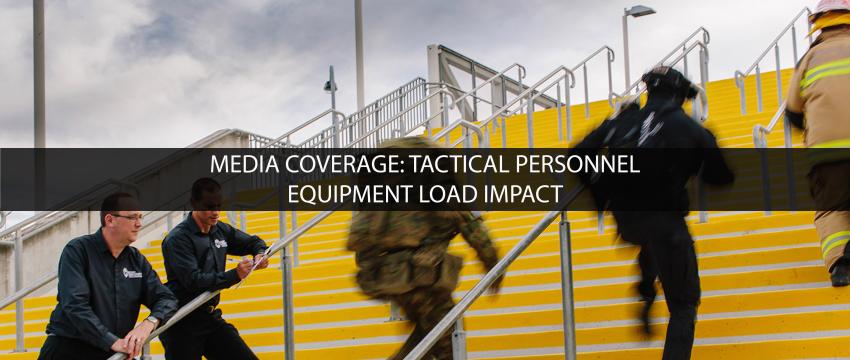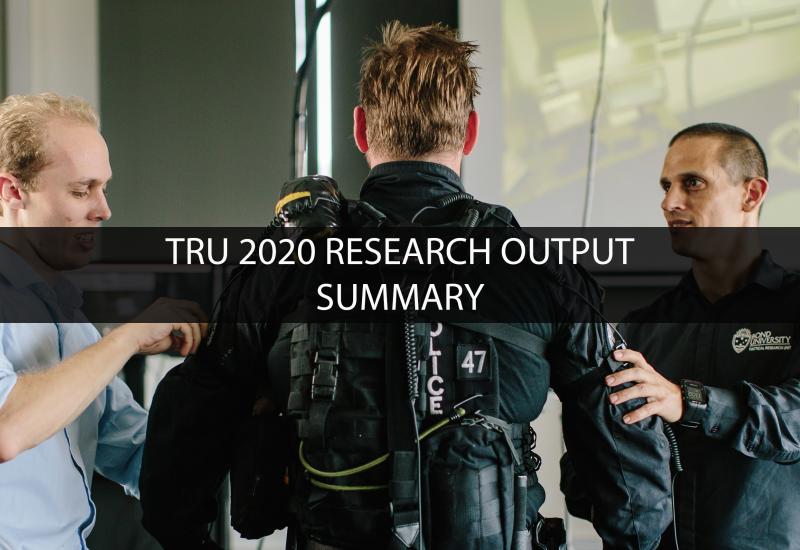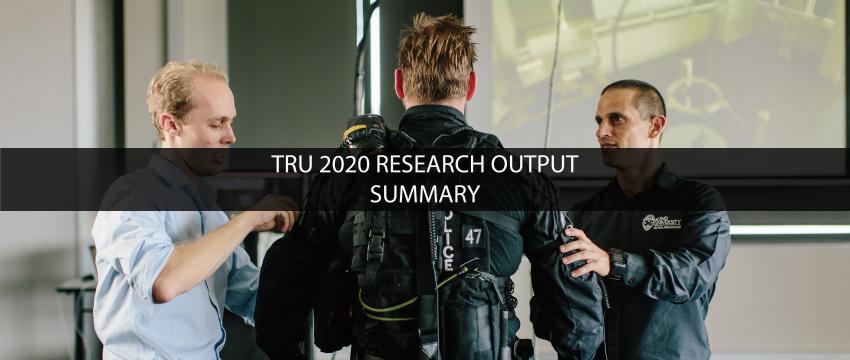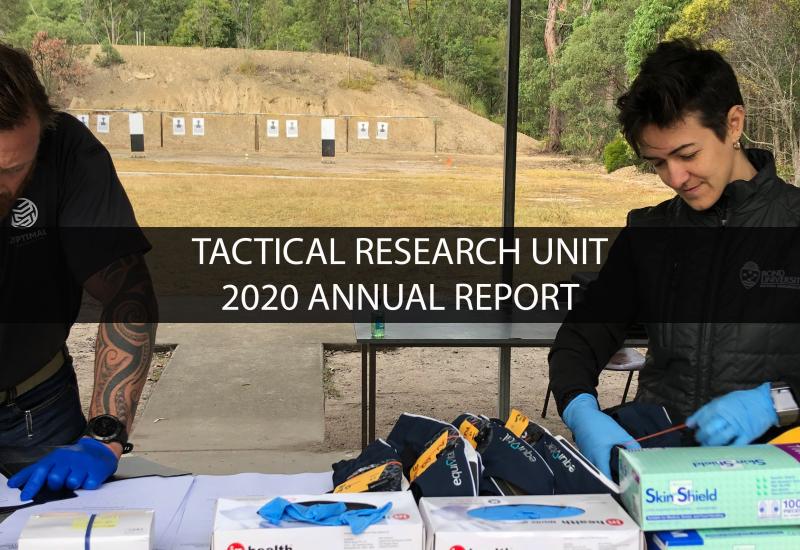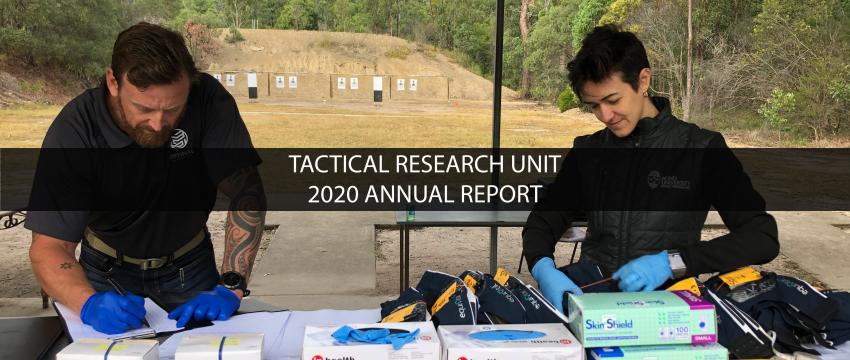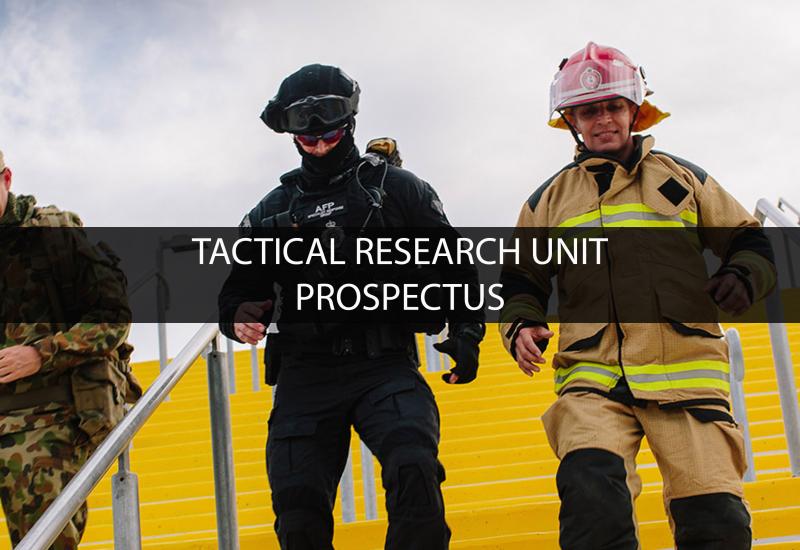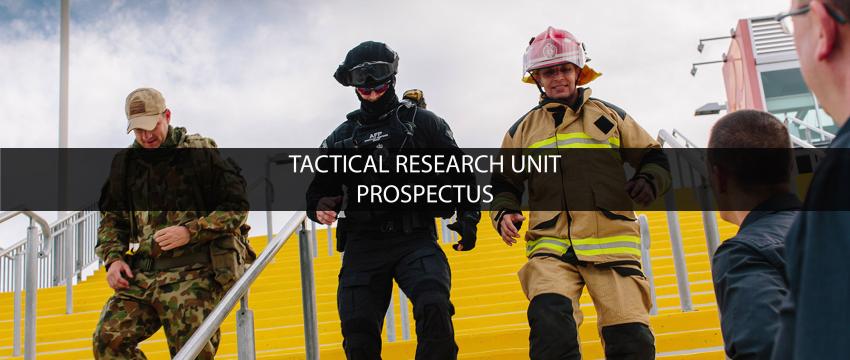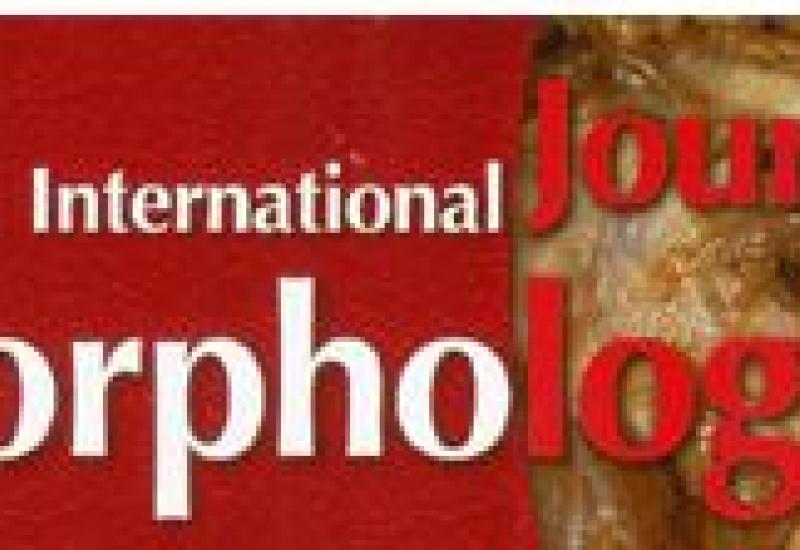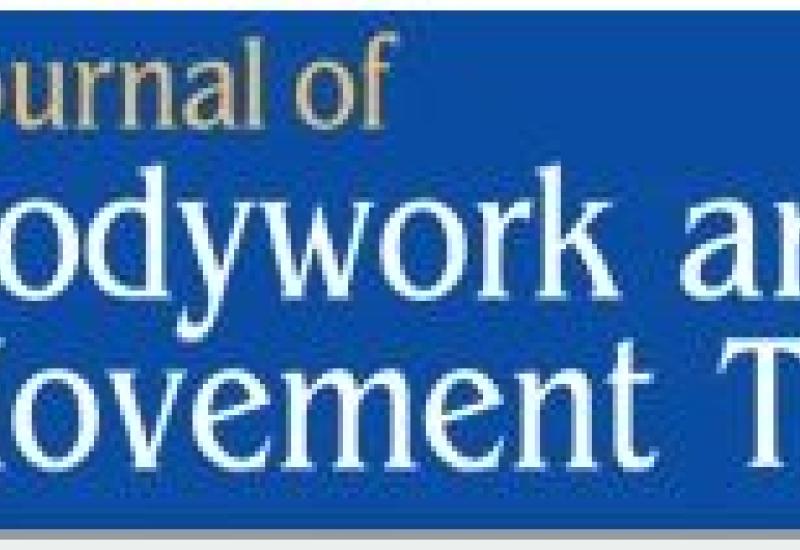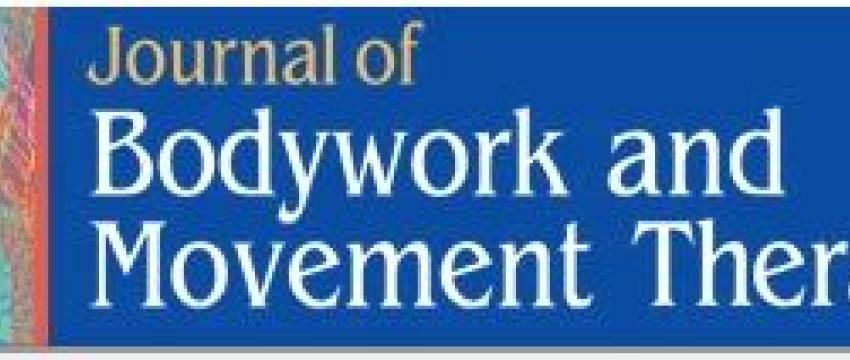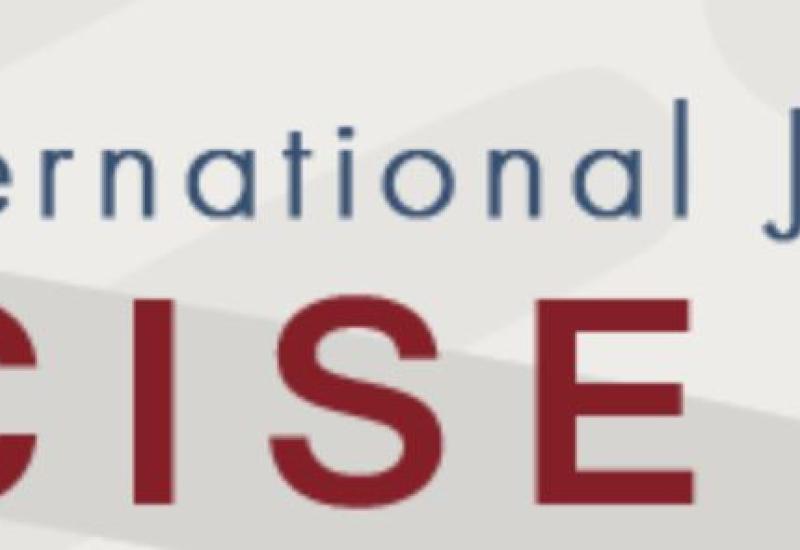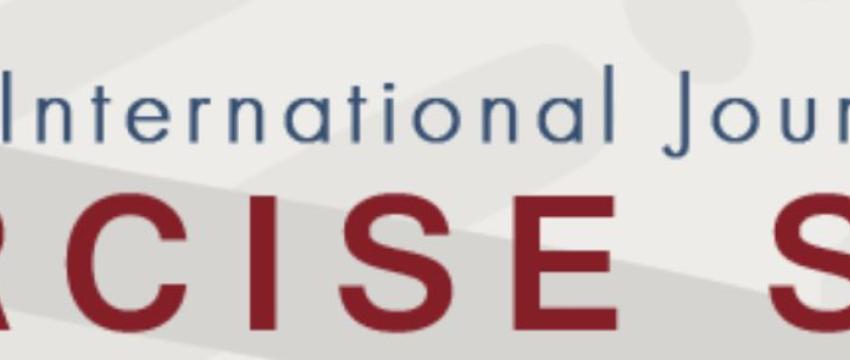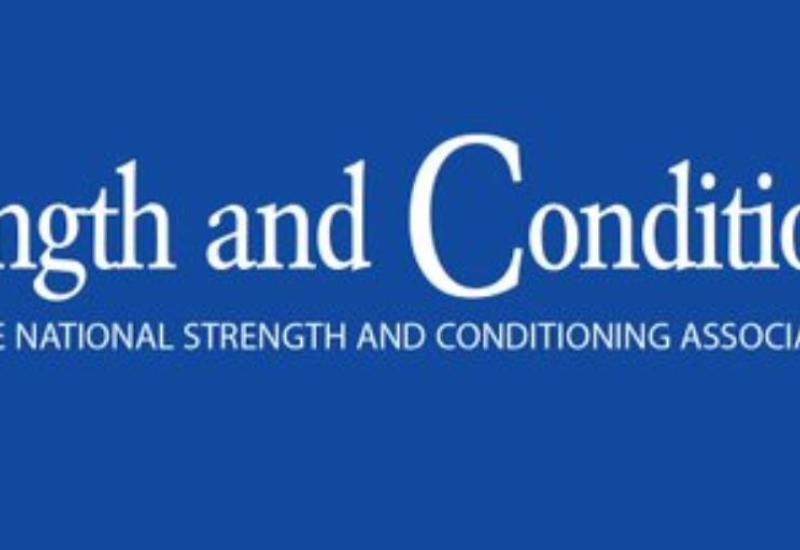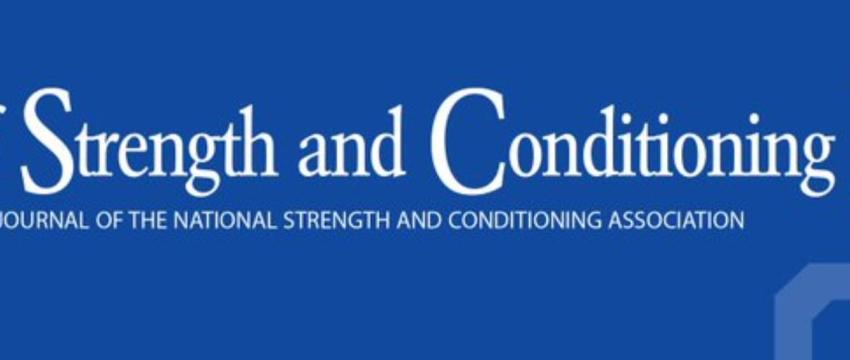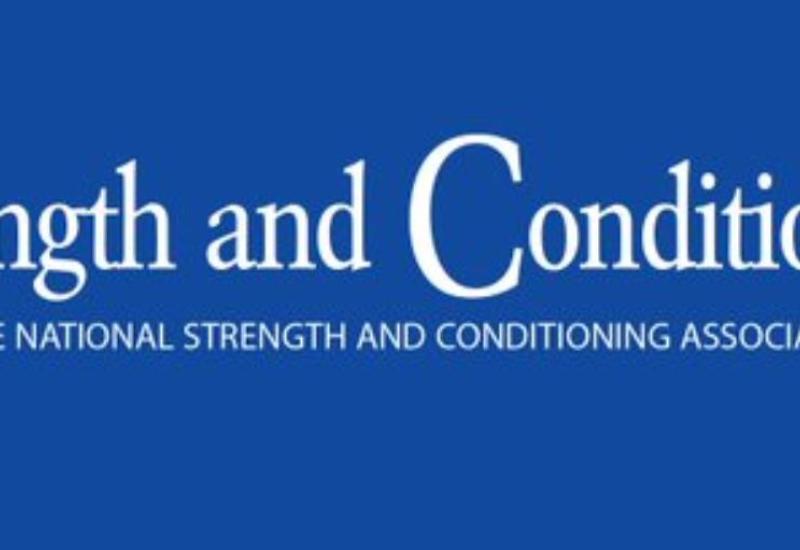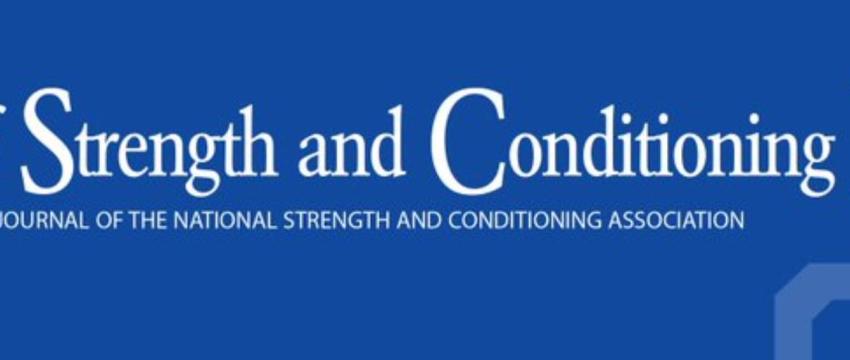Latest News
Tactical Research Unit of Bond University Researches Defence Force and Emergency Services Equipment Load Impact
Defence force and Emergency Services personnel are risking personal injury by carrying large loads on the job. The Tactical Research Unit is investigating how to ease the burden and the impact. Carly Masden from Seven News reports. Enjoy watching the news coverage here.
TRU 2020 Research Output Summary
The Tactical Research Unit has produced excellent outcomes in 2020, in spite of the challenges around the globe.
Please take a look at our list of publications, commissioned and technical reports, presentations, articles and media coverage.
Publications in Peer Review Journals
- Moreno, M., Rodas, K., Bloodgood, A., Dawes, J., Dulla, J., Orr, R. & Lockie, R. (2020). The influence of aerobic fitness on heart rate responses of custody assistant recruits during circuit training sessions, International Journal of Environmental Research and Public Health, 17(21). https://doi.org/10.3390/ijerph17218177.
- Lockie, R., Dawes, J., Moreno, M., McGuire, M., Ruvalcaba, T., Bloodgood, A., Dulla., J. & Orr., R. (2020). We need you: Influence of hiring demand and modified applicant testing on the physical fitness of law enforcement recruits. International Journal of Environmental Research and Public Health, 17(20). https://doi.org/10.3390/ijerph17207512
- Lockie, R., Dawes, J., Dulla, J., Orr, R. & Hernandez, E. (2020). Physical fitness, sex considerations, and academy graduation for law enforcement recruits. The Journal of Strength and Conditioning Research. doi: 10.1519/JSC.0000000000003844
- Marins, E., Barbosa, O., Machado, E., Orr, R., Dawes, J. & Del Vecchio, F. (2020). Profile of self-reported physical tasks and physical training in Brazilian special operations units: A web-based cross-sectional study, International Journal of Environmental Research and Public Health, 17(19). doi.org/10.3390/ijerph17197135. https://www.mdpi.com/1660-4601/17/19/7135/htm
- Kukic, F., Heinrich, K., Koropanovski, N., Poston, W. S. C., Cvorovic, A., Dawes, J., Orr, R. & Dopsaj, M. (2020). Differences in body composition across police occupations and moderation effects of leisure time physical activity. International Journal of Environmental Research and Public Health, 17(18). doi:10.3390/ijerph17186825, https://www.mdpi.com/1660-4601/17/18/6825
- Schram, B., Robinson, J. & Orr, R. (2020). The physical fitness effects of a week-long specialist tactical police selection course. International Journal of Environmental Research and Public Health, 17(18). doi:10.3390/ijerph17186782, https://www.mdpi.com/1660-4601/17/18/6782/htm
- Lockie, R., Beitzel, M., Dulla, J., Dawes, J., Orr, R. & Hernandez, J. (2020). Between-sex differences in the work sample test battery performed by law enforcement recruits. Journal of Strength and Conditioning Research. doi: 10.1519/JSC.0000000000003671
- Orr, R., Robinson, J, Hasanki, K., Talaber, K., Schram, B. & Roberts, A. (2020). The relationship between strength measures and task performance in specialist tactical police, Journal of Strength and Conditioning Research. doi: 10.1519/JSC.0000000000003511
- Lockie, R., Dawes, J., Orr, R. & Dulla, J. (2020). Recruit fitness standards from a large law enforcement agency: Between-class comparisons, percentile rankings, and implications for physical training. Journal of Strength and Conditioning Research. doi: 10.1519/JSC.0000000000003534
- Lockie, R., Hernandez, J., Moreno, M., Dulla, J., Dawes, J. & Orr, R. (2020). A follow-up research note: 2.4-km run and 20-m multistage fitness test relationships in law enforcement recruits after academy training. Journal of Strength and Conditioning Research. DOI: 10.1519/JSC.0000000000003489
- Strader, J., Schram, B., Irving, S., Robinson, J., Orr, R. (2020). Special Weapons and Tactics Occupational-Specific Physical Assessments and Fitness Measures. International Journal of Environmental Research and Public Health, 17(21), https://doi.org/10.3390/ijerph17218070
Commissioned and Technical Reports:
- Robson, K., Orr, R. & Pope, R. (2020). Tactical Research Unit Report for the Department of Veterans’ Affairs: Acute Meniscal Tears Of The Knee & Acute Articular Cartilage Tears - A Rapid Review. Tactical Research Unit, Bond University, Australia.
- Schram, B., Canetti, E., Simas, V., Campbell, P., Pope, R. & Orr, R. (2020). Tactical Research Unit Report for the Department of Veterans’ Affairs: Intervertebral Disc Prolapse - A Rapid Review. Tactical Research Unit, Bond University, Australia.
- Simas, V., Canetti, E., Schram, B., Campbell, P., Pope, R. & Orr, R. (2020). Tactical Research Unit Report for the Department of Veterans’ Affairs: Spondylosis - A Rapid Review. Tactical Research Unit, Bond University, Australia.
- Pope, R. & Orr, R. (2020). Tactical Research Unit Report for the Department of Veterans’ Affairs: Measuring occupational exposures in Australian Defence Force job categories for 28 medical conditions - Initial Exposure Summaries. Tactical Research Unit, Bond University, Australia.
- Orr, R., Schram, B., Simas, V. & Canetti, E. (2020). Use of the ReaperTM Load Carriage Assistance Device on Tactical Police Capability Report. Commissioned and funded by the Advanced Accuracy Solutions
- Orr, R., Schram, B., Simas, V. & Canetti, E. (2020). Comparison of Two Marksmanship Assessments. Commissioned and funded by the Optimal Performance Solutions and Australian Border Force
Seminars, Conventions and Conference Presentations/Posters:
- Orr, R. (2020). Taking physiotherapy subjects online: From theory to practice. Presented at: Inaugural Virtual Education Symposium, 15 -16 December 2020.
- Orr, R., Kukic, F., Marins, E., Lim, C., Dawes, J. & Lockie, R. (2020). The impact of load carriage on lower-body power in SWAT police. Presented at: Archibald Reiss Days, Belgrade, Serbia, 18-19 November 2020.
- Orr, R. (2020). Conditioning for load carriage across the career: Green, blue, and red. Presented at: Tactical Strength and Conditioning Annual Training Conference, USA, 25-28 August 2020.
- Bloodgood, A., McGuire, M., Dawes, J., Orr, R., Dulla, J. & Lockie, R. (2020). A pilot analysis of the influence of lower-body strength and power during law enforcement tasks under load. Poster presented at: National Strength and Conditioning Association National Conference and Exhibition, Las Vegas, NA, USA, 08-11 July 2020.
- Dawes, J., Smittle, M., Johnson, Q., Ward, C., Casteel, M., Orr, R. & Lockie, R. (2020). Differences in performance among officers while wearing personal protective vests. Poster presented at: National Strength and Conditioning Association National Conference and Exhibition, Las Vegas, NA, USA, 08-11 July 2020.
- Dawes, J., Johnson, Q., Terrance, T., Orr, R. & Lockie, R. (2020). Differences in selected measures of fitness between police cadets that pass or fail training academy. Poster presented at: National Strength and Conditioning Association National Conference and Exhibition, Las Vegas, NA, USA, 08-11 July 2020.
- Hernandez, E., Dulla, J., Orr, R., Dawes, J. & Lockie, R. (2020). Are there differences in the physical fitness characteristics of recruits from smaller and larger law enforcement agencies at the start of academy? Poster presented at: National Strength and Conditioning Association National Conference and Exhibition, Las Vegas, NA, USA, 08-11 July 2020.
- Johnson, Q., Kukic, F., Cvorovic, A., Orr, R., Lockie, R., Smith, D., Koropanovski, N. & Dawes, J. (2020). Associations between lower-body power and body composition to change of direction speed under two loading conditions among female police officers. Poster presented at: National Strength and Conditioning Association National Conference and Exhibition, Las Vegas, NA, USA, 08-11 July 2020.
- Lockie, R., Moreno, M., McGuire, M., Ruvalcaba, T., Bloodgood, A., Dulla, J., Orr, R. & Dawes, J. (2020). Strong arm (and legs) of the law: Relationships between isometric strength and the body drag in incoming deputy sheriff recruits. Poster presented at: National Strength and Conditioning Association National Conference and Exhibition, Las Vegas, NA, USA, 08-11 July 2020.
- Lockie, R., Moreno, M., McGuire, M., Ruvalcaba, T., Bloodgood, A., Dulla, J., Orr, R. & Dawes, J. (2020). We need you: Influence of hiring demand and modified applicant testing on the physical fitness of deputy sheriff recruits. Poster presented at: National Strength and Conditioning Association National Conference and Exhibition, Las Vegas, NA, USA, 08-11 July 2020.
- Orr, R. (2020). Tactical load carriage: Research and practice. Presented at: International Community of Scholars in Kinesiology - Research Week Keynote presentations. University of Kentucky, USA, 04 March 2020.
- Canetti, E., Schram, B., Orr, R., Knapik, J. & Pope, R. (2020). Risk factors for development of lower limb osteoarthritis in physically demanding occupations: A systematic review and meta-analysis. Presented at: 5th International Congress on Soldiers Physical Performance, Quebec City, Canada, 11-14 February 2020.
- Tomes, C., Schram, B. & Orr, R. (2020). If they are not fit, they risk injury: The use of fitness testing results to predict injury in police recruits. Presented at: 5th International Congress on Soldiers Physical Performance, Quebec City, Canada, 11-14 February 2020.
- Orr, R., Schram, B., Canetti, E. & Pope, R. (2020). Distances travelled during recruit physical training: A drop in the bucket. Presented at: 5th International Congress on Soldiers Physical Performance, Quebec City, Canada, 11-14 February 2020.
- Orr, R., Walker, A., Schram, B., Gorey, R. & Pope, R. (2020). The impact of occupational tasks on firefighter hydration during a live structural fire. Presented at: 5th International Congress on Soldiers Physical Performance, Quebec City, Canada, 11-14 February 2020.
- Orr, R., Schram, B., Canetti, E. & Pope, R. (2020). Physical training in the military: A telling history. Poster presented at: 5th International Congress on Soldiers Physical Performance, Quebec City, Canada, 11-14 February 2020.
- Singh, J., Robinson, J., Schram, B., Irving, S. & Orr, R. (2020). Performance on an anaerobic specialist tactical police fitness test: Candidates versus specialist tactical response police officers. Poster presented at: 5th International Congress on Soldiers Physical Performance, Quebec City, Canada, 11-14 February 2020.
- Strader, J., Robinson, J., Schram, B., Irving, S. & Orr, R. (2020). Comparing an occupational specific physical assessment to fitness measures specialist tactical response police candidates: A retrospective cohort study. Poster presented at: 5th International Congress on Soldiers Physical Performance, Quebec City, Canada, 11-14 February 2020.
- Dennien, B., Robinson, J., Schram, B. & Orr, R. (2020). Use of a modified load carriage predictive equation to identify specialist police candidates at greater risk of injury and selection failure. Poster presented at: 5th International Congress on Soldiers Physical Performance, Quebec City, Canada, 11-14 February 2020.
- Dulla, J., Matthews, C., Mackenzie-Shalders, K. & Orr, R. (2020). Dietary intake, beliefs, and barriers in a cohort of law enforcement personnel undergoing training. Poster presented at: 5th International Congress on Soldiers Physical Performance, Quebec City, Canada, 11-14 February 2020.
- Schram, B., Orr, R. & Canetti, E. (2020). A profile of ankle Injuries in australian army soldiers. Poster presented at: 5th International Congress on Soldiers Physical Performance, Quebec City, Canada, 11-14 February 2020.
- Schram, B., Orr, R. & Canetti, E. (2020). Changes in training load in army basic training over an eight year period. Poster presented at: 5th International Congress on Soldiers Physical Performance, Quebec City, Canada, 11-14 February 2020.
- O’Shea, S., Pope, R., Orr, R. & Freire, K. (2020). Genitourinary health in female military personnel: An exploration of prevalence and occupational performance. Poster presented at: 5th International Congress on Soldiers Physical Performance, Quebec City, Canada, 11-14 February 2020.
- Canetti, E., Orr, R., Schram, B., Chapman, C., Kornhauser, C., Holmes, R. & Dawes, J. (2020). Physiological impact of stress inoculation training in police cadets and its relationship to physical fitness. Poster presented at: 5th International Congress on Soldiers Physical Performance, Quebec City, Canada, 11-14 February 2020.
- Dulla, J., Schram, B., Orr, R., Lockie, R. & Dawes, J. (2020). Profiling injuries sustained by law enforcement drill instructors. Poster presented at: 5th International Congress on Soldiers Physical Performance, Quebec City, Canada, 11-14 February 2020.
- Dulla, J., Schram, B., Orr, R., Lockie, R. & Dawes, J. (2020). Physical abilities related to peace-keeping and domestic security efforts. Poster presented at: 5th International Congress on Soldiers Physical Performance, Quebec City, Canada, 11-14 February 2020.
- Lockie, R., Moreno, M., Ducheny, S., Orr, R., Dawes, J. & Balfany, K. (2020). A pilot analysis of emerging surface electromyography wearable technology: Training load demands, muscle ratios, and sex differences in the casualty drag. Poster presented at: 5th International Congress on Soldiers Physical Performance, Quebec City, Canada. 11-14 February 2020.
- Schram, B., Robinson, J., Orr, R. & Canetti, E. (2020). The physiological effects of a five-day specialist police tactical team selection course. Poster presented at: 5th International Congress on Soldiers Physical Performance, Quebec City, Canada, 11-14 February 2020.
- Schram, B., Robinson, J., Orr, R. & Canetti, E. (2020). Survival of the fittest in a specialist tactical police selection course. Poster presented at: 5th International Congress on Soldiers Physical Performance, Quebec City, Canada, 11-14 February 2020.
- Lockie, R.G., Moreno, M.R., McGuire, M.B., Ruvalcaba, T.J., Bloodgood, A.M., Dulla, J.M., Orr, R.M. & Dawes, J.J. (2020). We need you: Influence of hiring demand and modified applicant testing on the physical fitness of deputy sheriff recruits. 43rd National Strength and Conditioning Association National Conference and Exhibition, Las Vegas, USA, 8 – 11 July 2020.
- Lockie, R.G., Moreno, M.R., McGuire, M.B., Ruvalcaba, T.J., Bloodgood, A.M., Dulla, J.M., Orr, R.M. & Dawes, J.J. (2020). Strong arm (and legs) of the law: Relationships between isometric strength and the body drag in incoming deputy sheriff recruits. 43rd National Strength and Conditioning Association National Conference and Exhibition, Las Vegas, USA, 8 – 11 July 2020.
Specialty Presentations:
- Orr, R. (2020). Tactical load carriage. Invited talk for 2020 Tactical Life Webinar, 21 April 2020.
2. Orr, R. (2020). The warrior mindset. Oral presentation for Burleigh Barracudas at Burleigh SLSC, 8 January 2020.
Magazines/Journal Articles:
- Orr, R., Dulla, J., Schram, B. & Canetti, E. (2020). Focus on officer wellness: Police officer load carriage requirements. Police Chief, April 2020, Vol 87, No 4.
- Dulla, J., Orr, R., Lockie, R. & Dawes, J. (2020). Focus on officer wellness: Physical demands of patrol. Police Chief, March 2020, Vol 87, No 3.
- Orr, R. (2020). The different types of fitness tests in law enforcement. Police Chief, January 2020, Vol 87, No. 1.
Media Coverage:
- Veteran's research for Diggers wins top prize - October 2020
Ben Schram & Gulasekaran Rajaguru
Impact News Service, India.
- How backpacks and even purses ruin posture and cause pain - September 2020
Rob Orr
Elemental: https://elemental.medium.com/how-backpacks-and-even-purses-ruin-posture-and-cause-pain-a8539fd374a0
- Focus on officer wellness: Understanding the physical wellness of female recruits - May 2020
Ben Schram, Rob Orr, Elisa Canetti & Joe Dulla
Police Chief: https://www.policechiefmagazine.org/fow-understanding-the-physical-wellness-of-female-recruits/
- Focus on officer wellness: Physical demands of patrol - March 2020
Rob Orr
Police Chief: https://www.policechiefmagazine.org/focus-on-officer-wellness-physical-demands-of-patrol/
- What does the future of apparel look like for our war fighters? - January 2020.
Behind the scenes EP:1. Jason Semple, Legear division manager, interviews Dr Rob Orr of the Bond University Tactical Research Unit
https://www.youtube.com/watch?v=rc06BQKUNZw&feature=youtu.be
TRU 2020 Annual Report
The Tactical Research Unit 2020 Annual Report is now available. Please enjoy taking an in-depth look into what last year looked like for the team.
The most notable highlight for 2020 was the conversion of the TRU from a research unit to a faculty research centre nested within the Faculty of Health Sciences and Medicine. Funding success in 2020 saw the TRU afforded the opportunity to expand to include two post-doctoral research fellows and additional casual administration support.
Noting the impact of COVID-19 on research opportunities (e.g., the redirection of tactical agencies’ priorities), the TRU continued to have success in small and large funding opportunities including a major tender success with the Department of Veterans’ Affairs and a third funding opportunity from Australian Defence Apparel. In an ever-discerning field, the TRU were fortunate enough to continue to grow their network of industry partners, academic institutions, and government organisations, both nationally and internationally.
A high research output was maintained with notable success in translation of research to real-world impact across law enforcement, defence and fire and rescue. Recognition of the TRU’s 2020 achievements saw both Dr Rob Orr and Dr Ben Schram recipients of VC’s Research Excellence Awards.
While 2020 did present with notable challenges, the TRU had a highly productive and impactful year due largely to the acknowledged support of key staff from the Doctor of Physiotherapy program, the Faculty of Health Sciences and Medicine, and Office of Research Services.
TRU Prospectus Update
Please take a look at the updated Tactical Research Unit Prospectus for insight into who we are and what we do.
For more information, please contact us on: tru [at] bond.edu.au
New article alert!
Association of Sex-Related Differences in Body Composition to Change of Direction Speed in Police Officers While Carrying Load
ABSTRACT:
Regardless of sex or body size, police tasks may require officers to change direction speed (CODS) under occupational loads. The purpose of this study was to investigate body composition and CODS in female and male police cadets in both unloaded and occupationally loaded conditions. Body composition and CODS of 51 female (FPC) and 70 male police cadets (MPC) were assessed. Six body composition indices were used: Body mass index (BMI), percent body fat (PBF), percent of skeletal muscle mass (PSMM), protein fat index (PFI), index of hypokinesia (IH), and skeletal muscle mass index (SMMI). The CODS was assessed by Illinois Agility Test (IAT) and IAT while carrying a 10-kg load (LIAT). An independent sample t-test was used to identify the differences between the sexes. The regression determined associations between body composition and LIAT. The alpha level was set at p < 0.05 a priori. MPC had significantly higher (p < 0.001) BMI, PSMM, PFI and SMMI and lower PBF and IH than FPC. MPC were also faster in IAT and LIAT, carrying lower relative loads that imparted less of an impact on CODS performance. Body composition was strongly associated with the time to complete LIAT (R2 = 0.671, p < 0.001). Difference in relative load and body composition influenced CODS performance in both unloaded and loaded conditions. Thus, optimizing body composition through increasing skeletal muscle mass and reducing fat mass could positively influence unloaded and loaded CODS performance and improve elements of police task performance.
URL: https://scielo.conicyt.cl/scielo.php?pid=S0717-95022020000300731&script=sci_arttext&tlng=n
New article alert!
The effects of body armour on mobility and postural control of police officers
ABSTRACT:
Background: Police officer use of Individual Light Armour Vests (ILAVs) is increasing due to potential occupational hazards that include blunt trauma, stabbing and light calibre bullets. It is unclear how addition of this extra load will affect the officer’s mobility or postural control.
Objectives: The aim of this study was to determine the effects of various ILAVs on the mobility and postural control of police officers when compared to wearing their normal station wear.
Methods: A prospective, within-subjects, repeated measures study was conducted in which officers wore one of three different ILAV variants or normal station wear (N) and acted as their own controls. Officer mobility was assessed via the Functional Movement Screen (FMS) and postural sway (including total sway, average sway velocity, medial-lateral velocity, anterior-posterior velocity and total excursion area) via force plate.
Results: Significant differences were found between ILAV or N conditions in various components of the FMS, including (R) Straight Leg Raise, (L) Shoulder Mobility and both (R) and (L) quad rotary stability. No significant differences were found in any of the balance measures between these conditions.
Conclusion: It appears ILAVs can significantly affect police officer mobility and therefore may contribute to injury risk and decreased ability to complete occupational tasks, though this should be weighed against protective benefits. ILAVs should therefore be carefully selected to minimise injury risk without detracting from occupational performance.
URL: https://www.bodyworkmovementtherapies.com/article/S1360-8592(20)30053-X/fulltext
New article alert!
The Relationship Between Acute: Chronic Workload Ratios and Injury Risk in Sports: A Systematic Review
ABSTRACT:
Purpose: Low injury rates have previously been correlated with sporting team success, highlighting the importance of injury prevention programs. Recent methods, such as acute:chronic workload ratios (ACWR) have been developed in an attempt to predict and manage injury risk; however, the relation between these methods and injury risk is unclear. The aim of this systematic review was to identify and synthesize the key findings of studies that have investigated the relationship between ACWR and injury risk.
Methods: Included studies were critically appraised using the Downs and Black checklist, and a level of evidence was determined. Relevant data were extracted, tabulated, and synthesized.
Results: Twenty-seven studies were included for review and ranged in percentage quality scores from 48.2% to 64.3%. Almost perfect interrater agreement (κ = 0.885) existed between raters. This review found a high variability between studies with different variables studied (total distance versus high speed running), as well as differences between ratios analyzed (1.50– 1.80 versus ≥ 1.50), and reference groups (a reference group of 0.80– 1.20 versus ≤ 0.85).
Conclusion: Considering the high variability, it appears that utilizing ACWR for external (eg, total distance) and internal (eg, heart rate) loads may be related to injury risk. Calculating ACWR using exponentially weighted moving averages may potentially result in a more sensitive measure. There also appears to be a trend towards the ratios of 0.80– 1.30 demonstrating the lowest risk of injury. However, there may be issues with the ACWR method that must be addressed before it is confidently used to mitigate injury risk. Utilizing standardized approaches will allow for more objective conclusions to be drawn across multiple populations.
New article alert!
Heart Rate Responses during Simulated Fire Ground Scenarios among Full-Time Firefighters
ABSTRACT:
Simulated fire ground scenarios (SFGS) provide firefighters with an opportunity to maintain skills, receive feedback, and optimize performance. Although there is extensive research on heart rate (HR) changes in the firefighter population, few examine the differences between positions. Firefighters are primarily responsible for fire suppression and control (23), officers for emergency operations and organizational management, paramedics for providing on-scene emergency medical care, and drivers are responsible for driving the fire apparatus. Utilizing HR analysis to quantify the physical demands of SFGS among firefighting crews by position. Sixty-seven male (age: 38.97 ± 9.17; ht: 177.99 ± 6.45 cm. wt: 88.83 ± 13.55 kg) firefighters (FF) participated in this investigation. FF crews performed two SFGS involving the suppression and control of a structural fire. Participants were outfitted with heart rate (HR) monitors and average heart rate (HRavg) and maximum heart rate (HRmax) data were collected for each of the two SFGS. Significant differences were observed for Age (P = 0.01), APMHR (P = 0.01), HRmax1(P = 0.04), and HRmax2(P = 0.04) in which firefighters had higher values for Age-predicted maximal heart rate (APMHR), HRmax1, HRmax2compared to the officers. SFGS can be very physically demanding events that may elicit maximal or near maximal HR responses regardless of position. Based on the metabolic demands of these events and the individual firefighter’s capabilities, this information can be used to develop resistance training and conditioning programs that optimize performance at maximal or near maximal heart rates.
New article alert!
ABSTRACT
Between-class comparisons, percentile rankings, and implications for physical training. J Strength Cond Res 34(4): 934–941, 2020—Law enforcement can be a physically demanding profession. Many agencies use a “one-size-fits-all” academy training approach, which may not be optimal for all recruits. There is also little information that benchmarks fitness of law enforcement recruits. The purpose of this study was to analyze between-academy class differences in fitness, as well as produce normative data for the development of strength and conditioning programs. A retrospective analysis of 908 recruits (761 men and 147 women), comprising 11 classes from one agency, was used. Fitness assessment data included push-ups, sit-ups, and mountain climbers in 120 seconds; pull-ups; 201-m run; and 2.4-km run. A one-way analysis of variance with a Bonferroni post hoc adjustment revealed that fitness varied significantly between classes. Class 11 completed less sit-ups than 6 other classes (p ≤ 0.033) and were slower in the 201-m and 2.4-km run than 5 classes (p ≤ 0.005). Class 7 completed less push-ups than 3 classes (p ≤ 0.036) and less mountain climbers and were slower in the 201-m run than 5 classes (p ≤ 0.005). Individual recruit analysis and percentile data indicated a wide spread of all assessment results and the effects upon female recruits. For example, 81% of women completed ≤2 pull-ups and were in the bottom 2 percentile bands; 72–76% of women were in the bottom 3 bands for push-ups and the 201-m run. Fitness varies from class-to-class, and female recruits will generally be less physically fit. Training staff should ideally implement individualized, ability-based programming where appropriate to train their recruits.
New article alert!
The Relationship Between Strength Measures and Task Performance in Specialist Tactical Police
ABSTRACT
Specialist tactical police officers (STPOs) carry heavier on-body loads than generalist police officers. Improvements in strength may mitigate the impacts of these heavier loads. The aim of this investigation was to determine the correlations between absolute and relative strength measures and occupational task performance in STPOs. Retrospective data were provided for 47 male specialist police officers from an elite Australian police unit. Data included body mass (mean = 89.0 ± 8.58 kg), strength measures (1 repetition maximum measures for a bench press, squat, deadlift, and pull-up), and task performance measures (85-kg victim drag wearing 15 kg of operational load and 5-km pack march wearing 40 kg of operational load). Pearson's correlations were conducted to determine relationships between measures and were plotted on a linear regressions model. Significant, moderate to strong correlations were found between all strength measures and victim drag performance and significant negative moderate correlations between relative bench press, absolute and relative squat, and absolute and relative pull-up and pack march times. The absolute deadlift had the strongest correlation to the victim drag (r = 0.747, p < 0.01) while the relative pull-up showed the strongest correlation with pack march performance (r = −0.466, p < 0.01). The requirement to lift a portion of the dummy off the ground during the victim drag may explain the increased importance of absolute strength while the requirement to transport load affixed to the body may explain the importance of relative strength requirements. Improvements in absolute and relative upper- and lower-body strength may improve task performance in this population.
